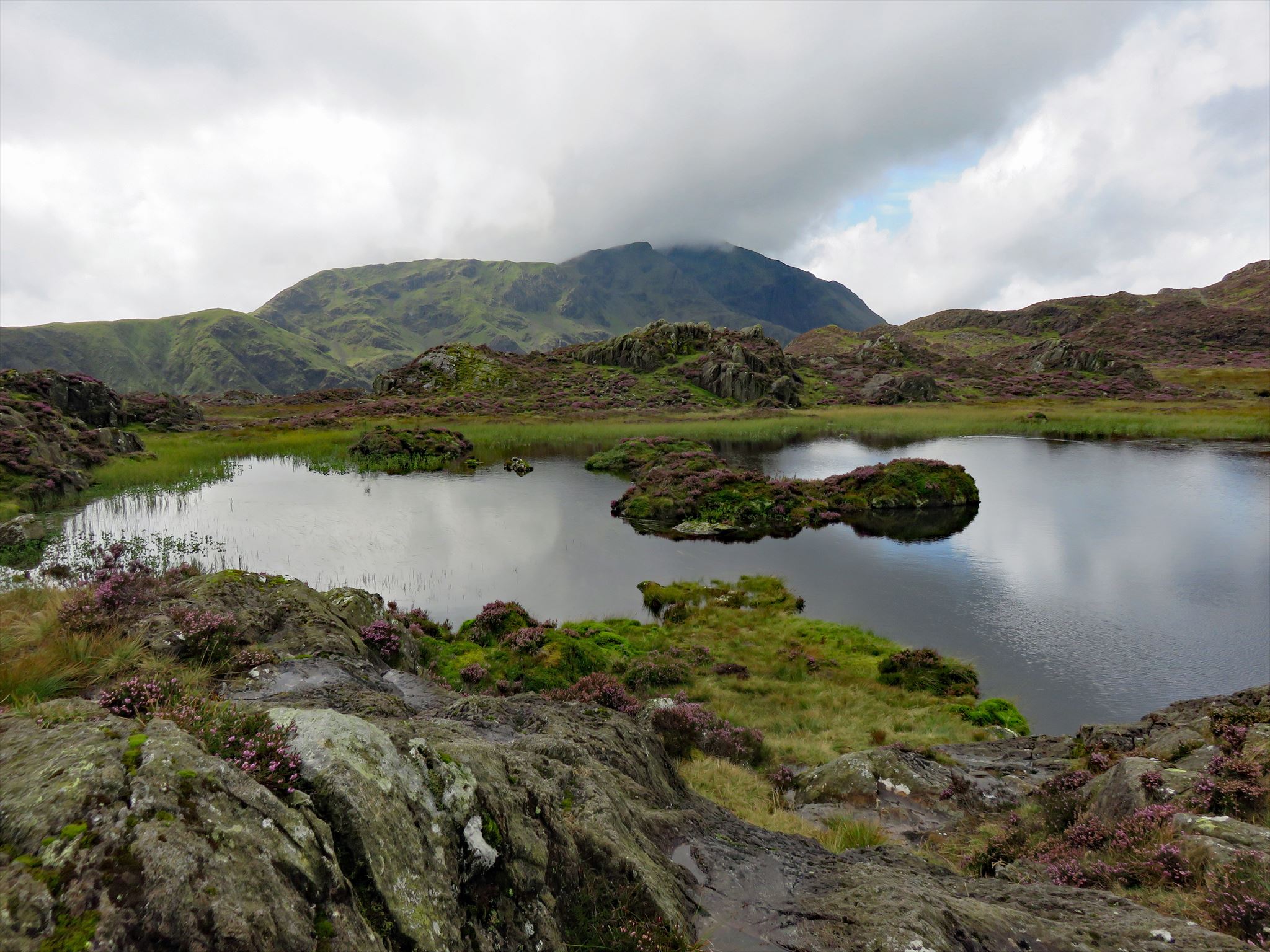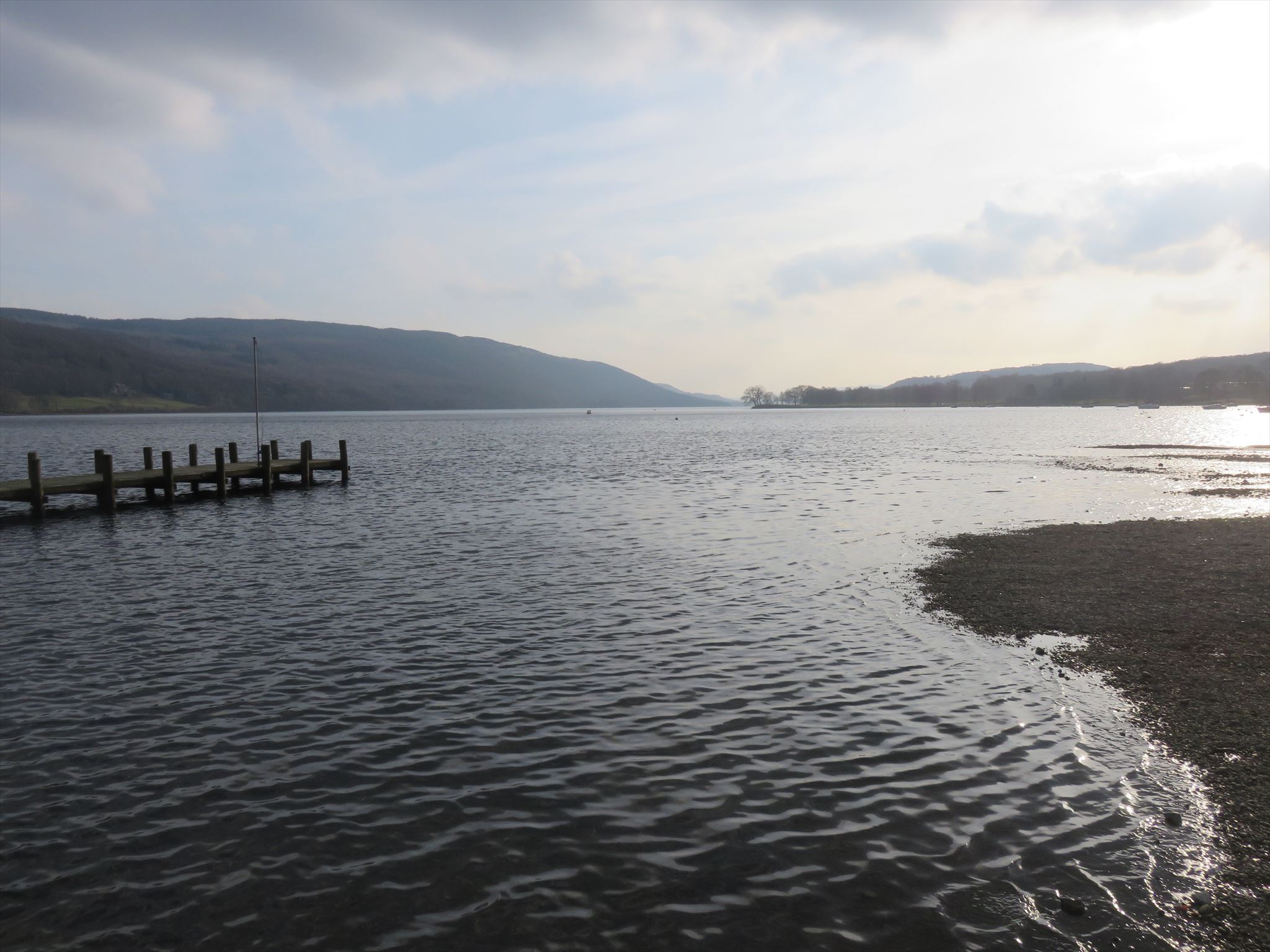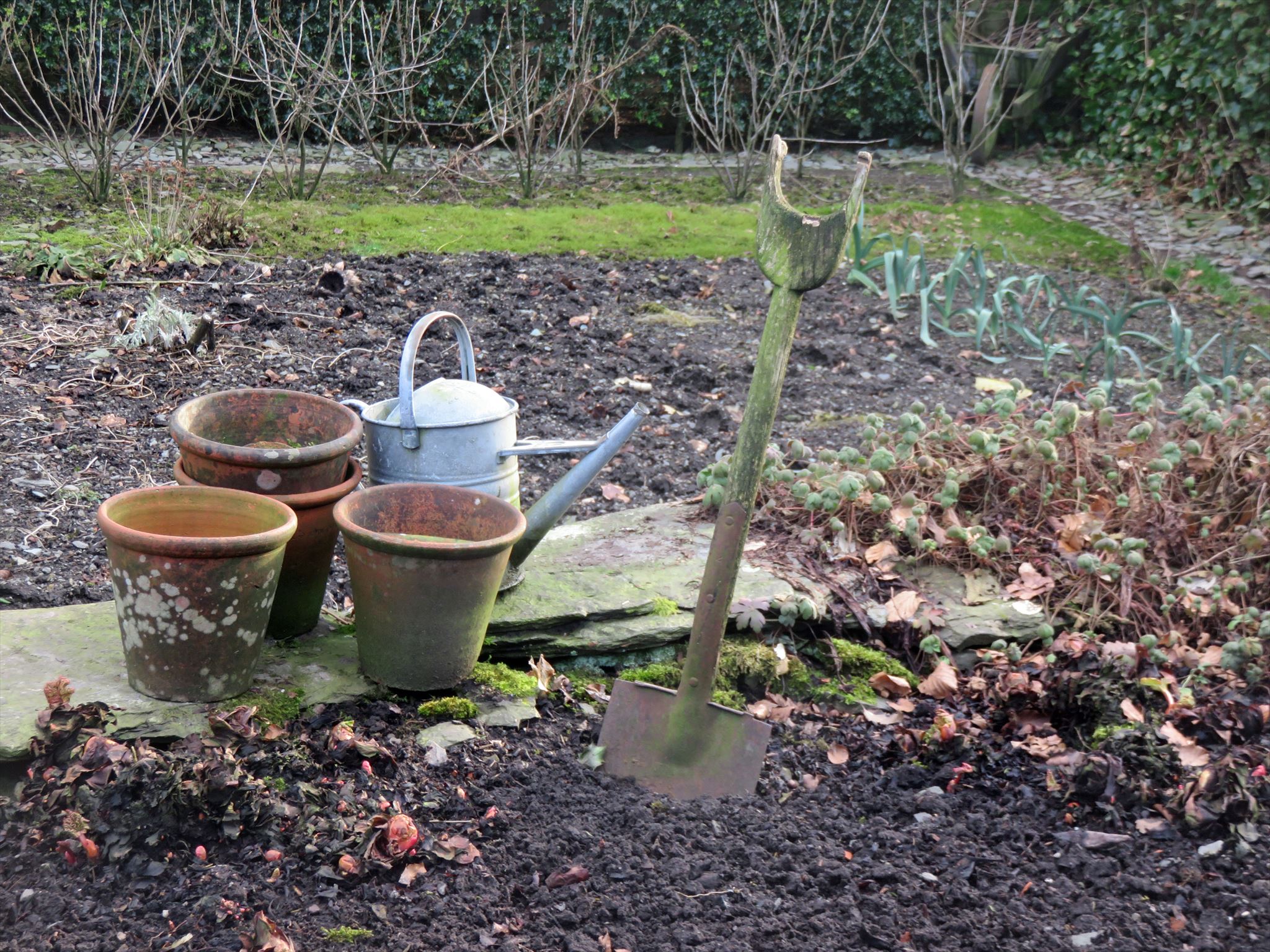The Lake District is a special place for us, having visited since we were babies. We love all the time we spend here and want to share with you some of the places in the area that make it unique and fun. We have resisted placing any waypoints on islands (we wanted to do this because of Swallows and Amazons and we love canoeing) and at the top of any of the fells (Roo wanted to do this because he loves walking and is trying to complete all 214 Wainwrights but Pinga doesn't like this) so we hope that this cache is accessible to as many people as possible. This a 1.5 terrain because of 14 steps involved in getting to the 1st waypoint and 5 steps to get to waypoint 4. Please note all waypoints can only be visited during daylight hours. Please check the opening times of the garden (which is free to enter) for waypoint 4 before going.
Alfred Wainwright
Alfred Wainwright was born in Blackburn, Lancashire on 17th January 1907. He came from a relatively poor family and worked hard at school to gain entry into the local grammar school. He studied to become an accountant and spent a large part of his career at Blackburn Borough Council. During his time here he set out with his cousin to visit the Lake District. The first time he ever saw the fells was from Orrest Head near Windermere and is where he says his love affair with the Lake District began. From then on Wainwright visited the Lake District as often as possible. He married Ruth Holden in 1931 and they had a son Peter. The family moved to Kendal in 1941 to enable Wainwright to take up a job at the Borough Treasurers office in Kendal eventually becoming Treasurer. Just before he retired his wife left him and they divorced. He then married Betty McNally who also became his walking companion.
Alfred Wainwright wrote over 40 books and devised the Coast to Coast long distance walk. It is his Pictorial Guides that he is best known for. These 7 pocket size books describe in great detail 214 Lakeland Fells. He set out to write these books on 9th November 1952 and from the beginning had a strict timetable spanning 13 years to finish them. Many people now attempt to walk to the top of all 214 fells that he described, a challenge which takes most people decades to complete.
Alfred Wainwright died on 20th January 1991. His wife Betty carried out his wishes by scattering his ashes at Innominate Tarn at the top of Haystacks. In the church at Buttermere there is a plaque in memory of Alfred Wainwright. It is placed in a window recess and when you raise your eyes up from the plaque and look out of the window you see Haystacks and look upon his final resting place.

William Wordsworth
William Wordsworth was born in Cockermouth, Cumbria on 7 April 1770. He developed a love of nature early in life and this theme is reflected in many of his poems. Wordsworth began to write poetry while he was at school but his first was published in 1793. He received a legacy 1795 from a close relative and he and his sister Dorothy went to live in Dorset. Two years later they moved to Somerset, to live near the poet Samuel Taylor Coleridge, who was an admirer of Wordsworth's work. Coleridge and Wordsworth collaborated on 'Lyrical Ballads' which were published in 1798. This collection of poems is generally taken to mark the beginning of the Romantic movement in English poetry.
In 1799 Wordsworth and Dorothy moved back to Cumbria and settled at Dove Cottage in Grasmere and it was here, in 1804, that he wrote his most famous poem, 'I Wandered Lonely as a Cloud'. Wordsworth married Mary Hutchinson in 1802. The next few years were personally difficult for Wordsworth. Two of his children died, his brother was drowned at sea and Dorothy suffered a mental breakdown. In 1813 Wordsworth moved from Grasmere to Ambleside where he continued to write poetry. In 1843 he became poet laureate. Wordsworth died on 23 April 1850 and was buried in Grasmere churchyard. His great autobiographical poem, 'The Prelude', which he had worked on since 1798, was published after his death.
Donald Campbell
Donald Campbell was born on 23rd March 1921 in Kingston Upon Thames, Surrey. He held 13 world speed records in the 1920s and 30s in the Bluebird cars and boats. He remains the only person to set both world land and water speed records in the same year (1964). Campbell set seven world water speed records in Blue Bird K7 between July 1955 and December 1964. The first of these marks, 202.32 mph (325.60 km/h), was set at Ullswater on 23rd July 1955, Subsequently, four new marks were registered on Coniston Water, where Campbell and Bluebird became an annual fixture in the latter half of the '50s. Campbell began to focus on the land speed record and on 17th July 1964 he posted a new land speed record of 403.10 mph (648.73 km/h). After this Campbell chased the water speed record one more time with Bluebird K7 and break both records in the same year. He achieved his seventh water speed record at Lake Dumbleyung near Perth, Western Australia, on the last day of 1964, with a speed of 276.33 mph (444.71 km/h). He had become the first and only person to set both land and water speed records in the same year.
On 4th January 1967 at 8.45am Campbell commenced the first run of his last record attempt on Coniston Water. The average speed for the first run was 297.6 mph. During his second run Bluebird reached a peak speed of 328 mph but began to bounce. Shortly after reaching peak speed Bluebird did an almost complete somersault before plunging into the water. The boat then cartwheeled across the water before coming to rest. The impact broke K7 forward of the air intakes which was where Campbell was sitting and the main hull sank shortly afterwards. Mr Whoppit, Campbell's teddy bear mascot, and his helmet was found among the floating debris. Royal Navy divers attempted for two weeks to find and recover his body but, although the wreck of K7 was found they could not find his body. Campbell's body was finally found in 2001.

Beatrix Potter
Beatrix Potter was born on 28th July 1866 and died on 22nd December 1943. Unlike other women of her time she was well educated and developed a passion for fungi because of their colours and her delight in painting them. When she went on holiday to the Lake District Beatrix Potter would write to her friends and illustrate these writings with quick sketches. Beatrix Potter often wrote to the young children in the care of her governess and it was in these letters that the story of "four little rabbits whose names were Flopsy, Mopsy, Cottontail and Peter" was first told. This was to become the Tales of Peter Rabbit and was published in 1902. The Tale of Squirrel Nutkin and The Tailor of Gloucester, which had also first been written as picture letters to the children, were published the following year.
In 1905 she used some of her income and a small inheritance from an aunt to buy Hill Top Farm in Near Sawrey in the English Lake District near Windermere. She became interested in the breeding and raising of Herdwick sheep. In 1923 she bought a large sheep farm in the Troutbeck Valley called Troutbeck Park Farm, formerly a deer park, restoring its land with thousands of Herdwick sheep. This established her as one of the major Herdwick sheep farmers in the county.
When Beatrix Potter died on 22nd December 1943 she left nearly all her property to the National Trust, including over 4,000 acres of land, sixteen farms, cottages and herds of cattle and Herdwick sheep. Hers was the largest gift at that time to the National Trust, and it enabled the preservation of the land now included in the Lake District National Park and the continuation of fell farming

Arthus Ransome
Arthur Ransome was an author born on 18th January 1884 in Leeds. He eventually settled in the Lake District. His most famous work is the Swallows and Amazons series of children's books about the school-holiday adventures of children, mostly in the Lake District and the Norfolk Broads. The books remain popular and "Swallows and Amazons" is the basis for a tourist industry around Windermere and Coniston Water, the two lakes Ransome adapted as his fictional North Country lake.
As you have travelled through the Lake District doing this virtual cache you will have passed many of the places that inspired Arthur Ransome and that he then adapted as his North Country Lake. This final waypoint is at his grave, a place with a lovely view over the countryside he loved so much.
To log this virtual you must visit all 5 waypoints. Please post your photos to your log and email the answers separately. Please do not put your answers in you log, if you do we will ask you to amend it.
1) At Waypoint 1 take a photo of yourself or your GPS at Wainwrights memorial plaque in the church with Haystacks behind you and post this as part of your log. If the church is closed please take a photo of you or your GPS with the church behind you.
2) At waypoint 1 as you look at Wainwrights memorial plaque and out of the window look to your right where you will see a small brass plaque. Please message us who is this plaque for and what years are mentioned on it. If the church is closed please message us the number of lights in the porch of the church.
3) At waypoint 2 take a photo of yourself or your GPS in front of the Wordsworth family plot and post this as part of your log.
4) At waypoint 2 find James Walter & Henrietta Gorman from Bradford and Campbell & Gillian Baldwin from Churchdown, Gloucester. Please message us who is between them.
5) At waypoint 3 take a photo of yourself or your GPS by the Donald Campbell memorial and post this as part of your log.
6) At waypoint 3 in front of the notice board you will find a stone set into the ground with a metal bolt on it. Please message us the 4 letters on this bolt.
7) At Waypoint 4 take a photo of yourself or your GPS in the doorway to Hill Top (free to enter the gardens and see the front door of Hill Top) or in front of the Tower Bank Arms (which is just down the road back towards the car park) which was featured in The Tale of Jemima Puddle-Duck
8) At Waypoint 5 take a photo of yourself or your GPS in front of Arthur Ransome's grave.
9) At waypoint 5 and close to Arthur Ransome's grave find the grave of Margaret Jane wife of Thomas Molyneux. Please message us with how old she was when she died.
Virtual Reward - 2017/2018
This Virtual Cache is part of a limited release of Virtuals created between August 24, 2017 and August 24, 2018. Only 4,000 cache owners were given the opportunity to hide a Virtual Cache. Learn more about Virtual Rewards on the Geocaching Blog.